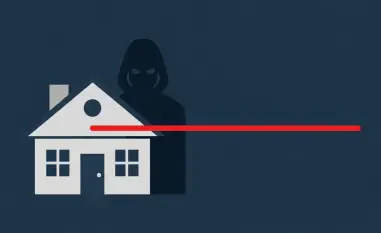On October 23, 2024, Fortinet publicly disclosed a critical flaw in its FortiManager software management platform, marking a significant moment in the cybersecurity landscape because of the severity of the vulnerability. Designated as CVE-2024-47575, this vulnerability has been assigned a Common Vulnerability Scoring System (CVSS) score of 9.8, identifying it as a severe security risk. The vulnerability allows unauthenticated attackers to execute remote code, potentially leading to further compromises within networks managed by FortiManager. Fortinet’s rapid response and the severity of the risk call for immediate attention and action from all users.
Fortinet’s advisory detailed that the vulnerability stems from missing authentication for a crucial function within the FortiManager fgfmd daemon. This deficiency allows an attacker to send specially crafted requests that can execute arbitrary code or commands on systems that have not been patched. However, exploiting this vulnerability requires a valid Fortinet device certificate, which attackers could potentially acquire from legitimate sources. Upon gaining possession of such a certificate, attackers can misuse it to gain unauthorized access to FortiManager, thereby compromising the entire network it manages.
Nature of the Vulnerability
The vulnerability in FortiManager is particularly alarming due to its roots in the lack of authentication for a critical function within the fgfmd daemon. This oversight enables malicious actors to craft specific requests that the system will treat as legitimate commands, allowing them to execute arbitrary code. The requirement for a valid Fortinet device certificate adds a layer of complexity to the exploit, but it is not an insurmountable hurdle for determined attackers. Often, these certificates can be obtained from legitimate sources, allowing attackers to bypass security measures intended to protect FortiManager.
Reports have confirmed that this vulnerability is actively being exploited in the wild, with security researcher Rob King from runZero noting that attackers are effectively leveraging certificates from legitimate devices to evade security checks. This has led to numerous hacking incidents where networks managed by FortiManager were compromised, highlighting the need for immediate action from users. The rapid exploitation of this vulnerability underscores the critical nature of the flaw and the importance of timely patching to prevent further unauthorized access and potential network breaches.
Security Authority’s Response
The Cybersecurity and Infrastructure Security Agency (CISA) responded swiftly to Fortinet’s announcement, recognizing CVE-2024-47575 as an actively exploited flaw and adding it to its Known Exploited Vulnerabilities Catalog on the same day. This inclusion means that federal IT administrators must prioritize addressing this security threat immediately to protect critical infrastructure. CISA’s advisory extends beyond federal entities, urging all users to promptly patch their systems to mitigate the risk of exploitation.
Security expert Kevin Beaumont has been vocal about the vulnerability’s severity and critiqued Fortinet’s initial approach of private notifications. Beaumont argues that immediate public disclosure would have offered better protection for customers, suggesting that the secrecy surrounding the flaw might serve to avoid public embarrassment rather than aid in user security. His estimates indicate that around 60,000 FortiManager users are exposed to potential attacks, emphasizing the need for widespread and urgent responses from all users to protect their networks.
Warnings and Recommendations
Amid the urgency to mitigate risks posed by the vulnerability, Fortinet has advised users of FortiManager version 7.6 and below, along with the cloud equivalent, to immediately update their software. Alongside this advisory, Fortinet provided a list of indicators of compromise, including four malicious IP addresses—45.32.41.202, 104.238.141.143, 158.247.199.37, and 45.32.63.2—to aid administrators in detecting and responding to ongoing attacks. The rapid response and detailed guidance from Fortinet are crucial in helping users protect their systems from exploitation.
The exfiltration of critical information such as IP addresses, credentials, and configurations from FortiManager systems highlights the gravity of the threat. The offensive nature of the exploit and its potential impact on organizational security necessitate immediate action. Users are advised to not only apply patches expeditiously but also monitor for signs of compromise diligently. Fortinet’s prompt guidance and continuous monitoring are essential measures to prevent attackers from leveraging this vulnerability to breach networks and exfiltrate sensitive data.
Detection and Mitigation of Exploits
The documented attacks typically involve automated scripts designed to extract files containing sensitive information from FortiManager systems. These files often include crucial details such as IP addresses, credentials, and configurations of managed devices, making them valuable targets for attackers. To date, Fortinet assured that there have been no reports of malware installations or backdoor creations on compromised systems. Additionally, there have been no observed unauthorized modifications to databases or managed devices, providing some reassurance amid the security concerns.
However, the severity of the vulnerability and the potential risks posed by the exfiltrated data make it imperative for users to apply patches swiftly. Staying vigilant and monitoring for any indications of compromise are crucial preventive measures. The aggressive nature of the exploit means that delays in patching could result in substantial damage, highlighting the importance of immediate and comprehensive responses to safeguard organizational security.
Broader Security Context for Fortinet
The disclosure of CVE-2024-47575 closely follows another significant security incident for Fortinet. Just last week, Fortinet users were alerted to a different critical flaw, CVE-2024-23113, also with a CVSS score of 9.8. Despite being addressed in February, procrastination in applying patches left approximately 86,000 users vulnerable, underscoring a persistent issue in cybersecurity. The pattern of delayed responses to critical vulnerabilities highlights the need for heightened awareness and prompt action to protect digital infrastructures.
Security experts consistently emphasize the necessity of transparency and promptness in vulnerability disclosure. Any delay in publicizing such severe vulnerabilities can exacerbate their impact, potentially leading to broad exploitation before users become aware and can take protective measures. Critics argue that vendors have a responsibility to their customers to prioritize their security over potential reputational risks, advocating for rapid, transparent disclosures to enable users to defend against emerging threats effectively.
Conclusion
On October 23, 2024, Fortinet publicly revealed a critical flaw in its FortiManager software management platform, highlighting a significant cybersecurity issue due to the vulnerability’s severity. Known as CVE-2024-47575, this flaw received a Common Vulnerability Scoring System (CVSS) score of 9.8, indicating a high-level security threat. The vulnerability permits unauthenticated attackers to execute remote code, potentially leading to further compromises in networks managed by FortiManager. Fortinet’s quick response and the gravity of the risk necessitate immediate user action.
The advisory from Fortinet explained that the vulnerability arises from missing authentication in a crucial function within the FortiManager fgfmd daemon. This gap enables an attacker to send specially crafted requests, allowing the execution of arbitrary code or commands on unpatched systems. To exploit this vulnerability, attackers need a valid Fortinet device certificate, which they could obtain from legitimate sources. With such a certificate in hand, attackers can abuse it to gain unauthorized access to FortiManager, thereby endangering the entire network it controls.













